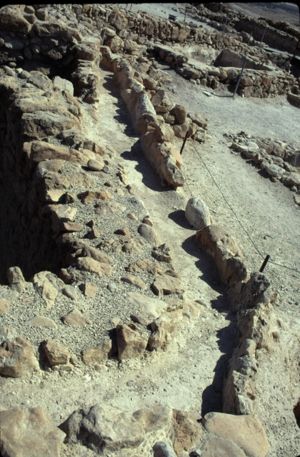by hadassah | Sep 26, 2016 | Maccabean Period
Unique 2,200-year-old stele (inscribed stone block) that provides new insight into the dramatic story of Heliodorus and the Temple in Jerusalem, as related in the Second Book of Maccabees. The newly deciphered stele presents new information about Heliodorus, who,...
by hadassah | Nov 16, 2015 | From Alexander to the Maccabees, Maccabean Period
A Greek name meaning “comparable to his father” or “worthy of his father”. In this context, we are referring to Antigonus (died 37 BC), the last ruler of the Hasmonean kingdom of Judea. This is known as the, “Coin of...
by hadassah | Jan 29, 2009 | Excavation, Maccabean Period
The Enigma of Qumran, Hershel Shanks, Biblical Archaeology Review (24:01), Jan/Feb 1998. Four archaeologists assess the site If you want to understand how archaeologists think, how they reason, how they work, how they interpret finds—and why they sometimes...

by hadassah | Jan 29, 2009 | Maccabean Period
Highlights- Coin of Alexander Jannaeus, 103-76 BCE The Temple Scroll, c. 100 BCE The War Scroll, c. 100 BCE Menorah Coin, 40-37 BCE The Ten Commandments Scroll, 30-1 BCE Overview The Maccabees (Hasmoneans) 167-63, Teddy Kollek and Moshe Pearlman, Jerusalem- Sacred...
by hadassah | Jan 29, 2009 | Maccabean Period
What Was Qumran? A Ritual Purification Center, Edward M. Cook, Biblical Archaeology Review (22:06), Nov/Dec 1996. Qumran has remained a mystery long enough. Forty-five years after excavations first began, all the evidence from the site has still not been...
by hadassah | Jan 29, 2009 | Maccabean Period
Where the Temple Tax Was Buried, Manfred R. Lehmann, Biblical Archaeology Review (19:6) Nov/Dec 1993. The key to understanding the Copper Scroll One Dead Sea Scroll stands out as unique—in many ways. First, of course, is the material it is written on. It is the...
